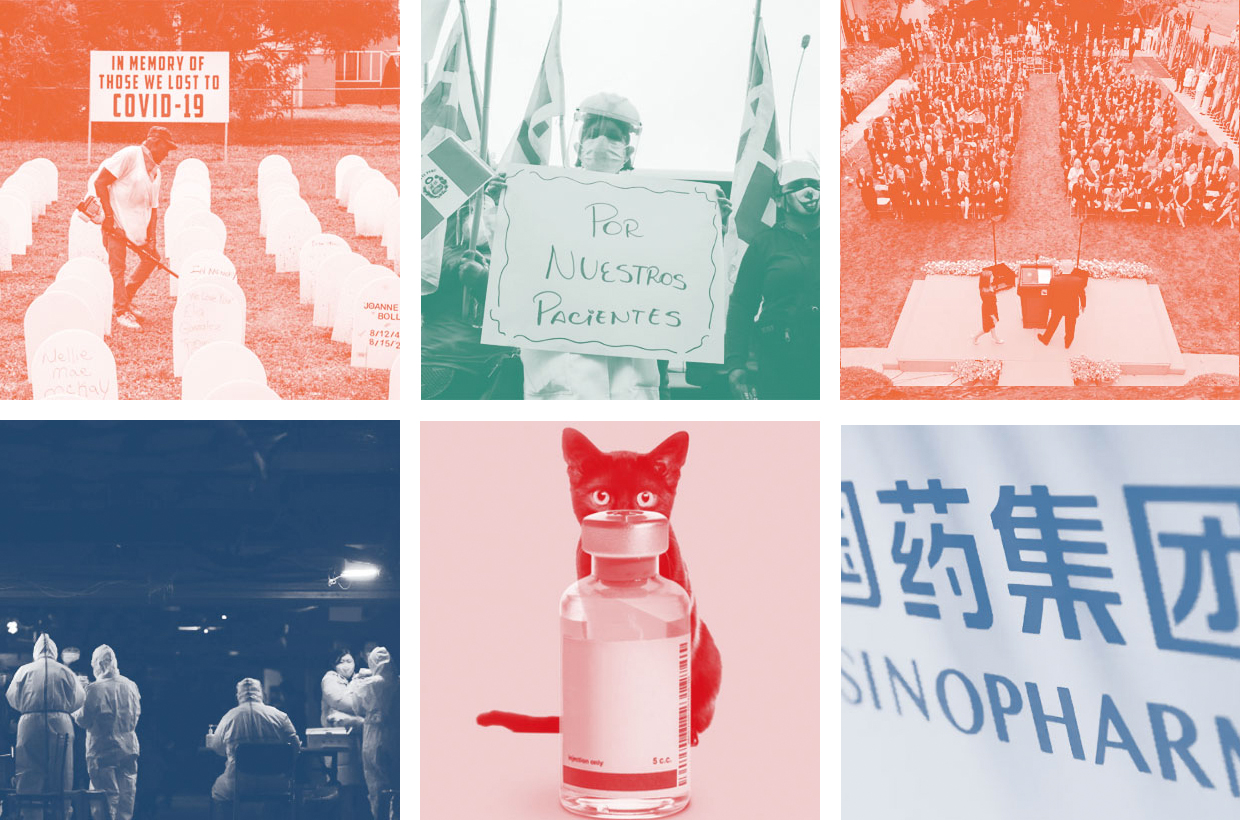Today, one year after the World Health Organization (WHO) officially declared COVID-19 as a pandemic (11 March 2020), we launch the COVID-19 timeline as a free, fact-checking and research tool for journalists, academics, treatment activists and others.
To date, the timeline has plotted over 350 key developments, from the first reported case of the novel coronavirus in China on 17 November 2019, to the devastating global impact of the virus – and of political and profit-led decision-making over public health.
Each entry is categorised by overlapping themes: epidemiology, natural history, policy and access issues, testing and prevention, treatment, and vaccines. It covers events of note, from travel bans to treatment trials, from the behaviour of presidents and politicians, ranging from absurd to deadly, to infections in zoo animals and alcohol bans.

Plotting vaccine development
Recently, the focus has shifted to the rapid development of coronavirus vaccines, drawing from decades of previous research, such as on mRNA technology. We applaud the scientists behind these technologies, who were supported by the significant investment of public money and funding from philanthropists – not just private investment.
Vaccines for all – not vaccine nationalism
Ensuring equitable access to vaccines, globally, is essential to stemming the pandemic – it will prevent the emergence of more viral variants that may be more contagious, deadlier and able to evade immune protection from vaccines or prior coronavirus infections. But pharmaceutical corporations are putting profits before public health, by selling to rich countries first. While high-income countries continue to purchase more vaccines than they need, people in low- and middle-income countries remain unvaccinated and vulnerable to illness and death from COVID-19 because they aren’t getting close to their share of vaccines.
Vaccine nationalism will harm us all. According to modelling from Chinazzi et al, distributing the first two billion doses of coronavirus vaccines by national population would decrease the global death toll by 61% – but allowing the 47 richest countries to monopolize the supply will only reduce deaths by 33%.
A tool for treatment activists
While the timeline objectively documents key facts and events as they happened, the story that has emerged is all too familiar for treatment activists – that science i our friend, not the pharmaceutical corporations.
The current patent system enables companies to profiteer off essential goods – even during a pandemic. Companies with a multi-billion dollar stake in COVID-19 technologies are making shallow promises to protect their reputation and future profits. These promises include not profiteering for the ‘duration of the pandemic’, while unilaterally putting a premature end date on it; committing to ensuring equal access while consistently choosing to sell to high-income countries first and in bulk; claiming vaccines will be ‘not-for-profit’ in perpetuity for low-income countries, without transparency about pricing; failure to reflect public investment in vaccine development in their pricing – and even demanding that some middle-income countries use sovereign assets such as their embassies and military bases for collateral to shield them from litigation. In addition, the continued refusal to share their coronavirus vaccine technology is leaving billions of people without protection against COVID-19.
This timeline supplies documentation for holding the pharmaceutical industry and governments to account – and lessons for a public health, rights-based response to pandemics that hopefully, will never need to be learned again.




